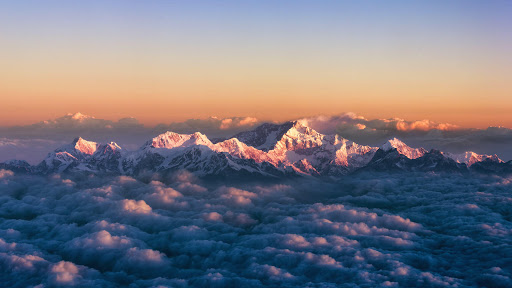Sandakphu – Sandakphu A pristine region of the eastern Himalayas lies close by and sometimes intersecting the border with Nepal in the sublime north mountains of western Bengal, not far from the famous Darjeeling hills.
The Singalila Ridge, extending north-south, separates Bengal from the other east-Himalayas and now west, is mostly harmonious in West Bengal, Sikkim, and partly far-west Nepal. The Singalila National Park is the predominantly wrapped mountain ridge of untouched perennial greenery and protected by immaculate wildlife. Sandakphu is the pinnacle of this wooded ridge.
About
“Peak of the poisonous plants,” means sandakphu, literally. Types can be accredited to the flowering of some poisonous plant genus in the vicinity. One is ‘Aconitus,’ a permanent shrub, whose roots have always been used as a medicine, while its luminous, purplish-blue flowers and leaves can become lethally toxic when they are unwisely consumed. Another is the Cobra Lilies Himalayan, which is also an area that abounds.
Sandakphu is a notable name for the light-moderate trek in the world of trekkers. At an altitude of 11,930 ft is the summit of the Ridge of Singalila and the Nationalpark. What makes it so special in West Bengal the highest point?
What is so special?
The fact that, from here on a clear morning, particularly at the wee hours during dawn breaks, 4 of the 5 highest peaks in the world can be seen as part of an unearthly 180° view, makes this small hamlet on a crest a place not to be missed in the eastern Himalayas.
In the golden tone at dawn, Mt. Everest (29,029 feet, highest), Lhotze (27,940 feet, fourth highest), and Makalu (27,838 feet, fifth high) can be seen spectacularly in all five loft lofts of Sleeping Buddha (Mt. Kanchenjunga, 38,169 feet, 3rd highest).
The view from west to the east includes unbelievably peaks from Nepal, Tibet, Sikkim, Bhutan, and Arunachal. It is a humiliation to witness the rising sun from here when the brilliant, red-rosy-golden shades of darkness over the wavy wolves of the valley below are shining apart onto the gigantic snowy mountains.
Is walking in Sandakphu the only way to get there?
No. No. It’s also motorized. There’s fishing, however. Nobody can drive on any smooth tarmac. It is difficult and can only be done with a robust 4 / 4 SUV. Full of loose rocks, precarious curves, and steep accents, exceptional riding skill would also be required to get to Sandakphu without serious vehicle damage.
Old land Rovers from colonial times between Manebhanjan and Sandakphu, and also until Phalut until recently, were banned by the local authorities under the pretense that the vehicles did not comply with existing safety and environmental standards but that the tourists did not walk up with reluctance (as of the 30 January 2018).
The government of West Bengal subsidizes its owners instead to buy Boleros to remove the land rovers. All said some land rovers are still on the road, as I could collect from some locals.
In summer this year, with all its models throughout the age, JLR celebrated its 70th anniversary in the region. From Series I very first to Discovery most recent. It discusses many of the iconic nature and heritage of this routine with Land Rovers.
The entire 30 kilometers earlier was from Chitre (2 kilometers from Manebhanjan) to Sandakphu trek and another 21 kilometers earlier was a boulder-gravel path to Phalut (second highest peak of Singalila).
At present the route is paved for 20 kilometers from Manebhanjan until the Gairibas square, partly with tarmac and partly with concrete. Sandakphu’s final twelve kilometers and Phalut 21. The last twelve kilometers are the same.
Biking is also an option but it is a very hard area to travel. It should no longer be a problem, but not only the efficiency of the bike, but also the abilities and maneuvering of riders will test the remainder of the route properly.
How hard is the Sandakphu trek precisely?
Well, it’d be easy to moderate for an eager trekker. It’s also very manageable for absolute newbies. First, mountaineering or climbing has nothing to do with trekking. It’s just a word for mountain walks or walks. If you are quite fit and can walk 8-10km in the plains with 2-3 pauses, you can do it more usually.
How hard is the Sandakphu trek precisely?
Well, it’d be easy to moderate for an eager trekker. It’s also very manageable for absolute newbies. First, mountaineering or climbing has nothing to do with trekking. It’s just a word for mountain walks or walks. If you are quite fit and can walk 8-10km in the plains with 2-3 pauses, you can do it more usually.
Of course, your knees and your bald muscles will hurt a little, or you can sometimes twist or fall down, but that’s part of the adventure. Countless beginners like me did it and were thus constantly begged by the trekking bug.
